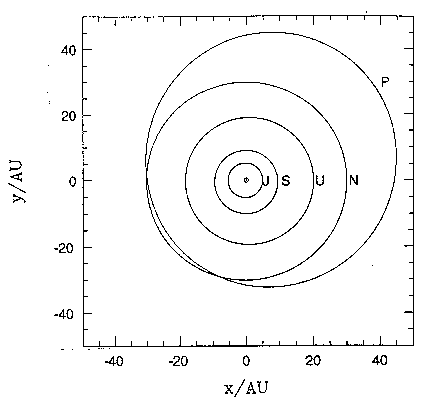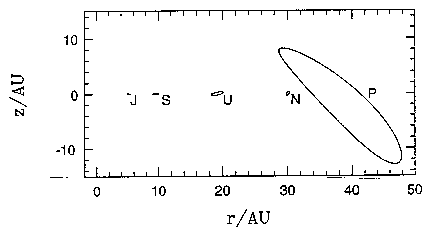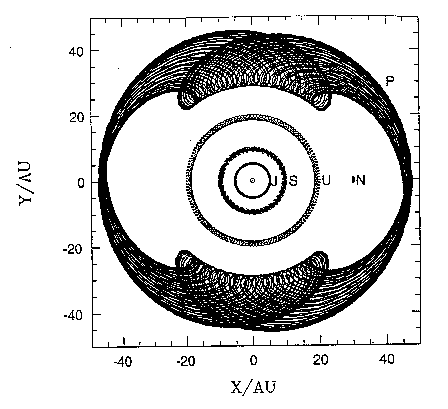
From a bird's eye view of the eclipticĦA it is clear that Pluto's orbit is more eccentric than any other planet's. Pluto's orbit appears to intersect Neptune'sĦA and for a period of about 20 years Pluto is slightly closer to the sun than Neptune. The next viewgraph shows that the apparent intersection of orbits is an illusion.

Here we see the z-component of each planet's position plotted against the simultaneous distance from the sun. Most planets only make small excursions in the vertical and radial directionsĦA but Pluto executes a largeĦA tear-shaped figure. This vertical projection shows that Pluto is far from being Neptune-crosser.

Pluto and Neptune are in a well-known 3:2 resonance which prevents their collision or even any close approachesĦA regardless of their separation in the z-dimension. This figure shows the orbits of the four giant planets and Pluto in a reference frame rotating synchronously with Neptune's mean motion. The minimum Pluto-Neptune separation is 17 AUĦA compared to the minimum Pluto-Uranus separation of 11 AU. The libration of Pluto's orbit is due to an exchange of angular momentum with Neptune. When Pluto is "catching up" to NeptuneĦA it gains angular momentum at Neptune's expense. Pluto moves into a higher orbitĦA but falls behind NeptuneĦA since higher orbits have slower tangential velocities. Thousands of years laterĦA as Neptune seems poised to overtake PlutoĦA the opposite exchange takes place. Pluto loses angular momentumĦA falling to a lower - but faster - heliocentric orbit.